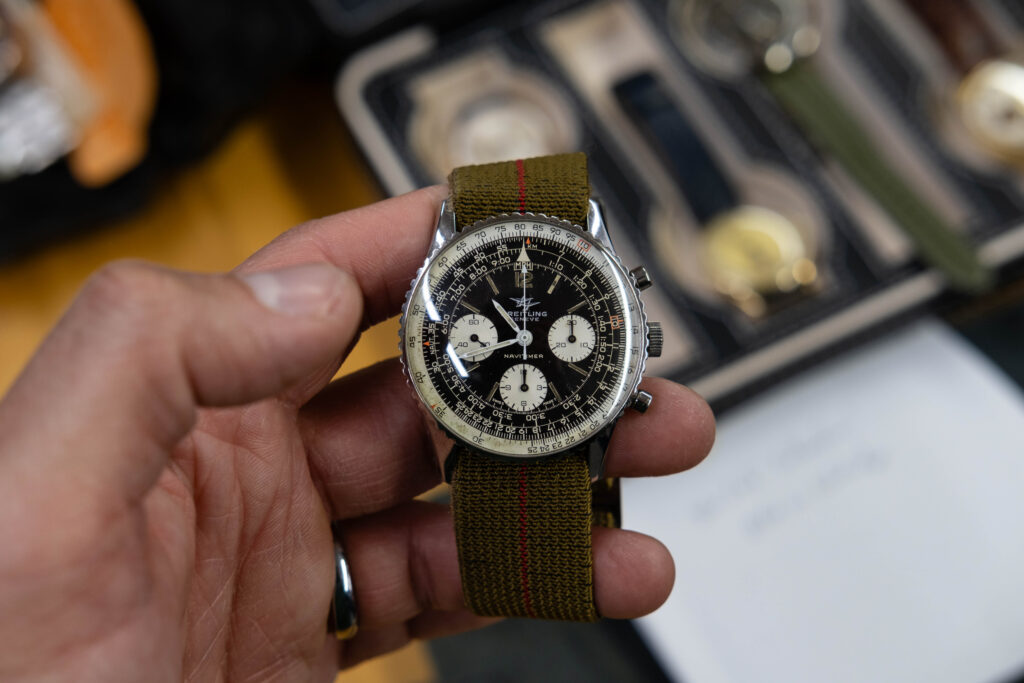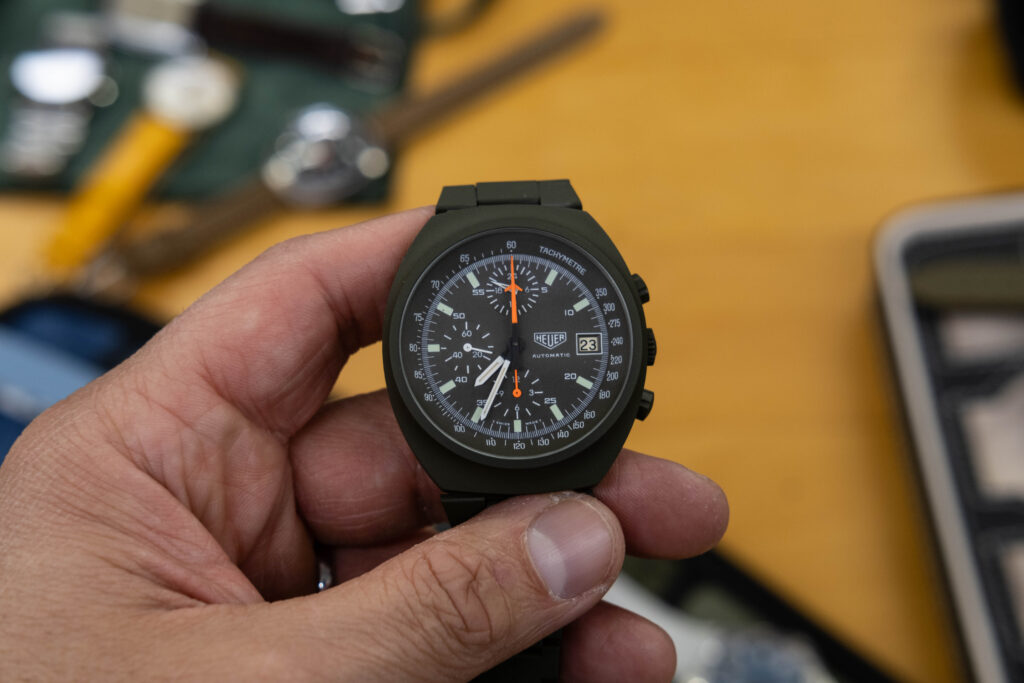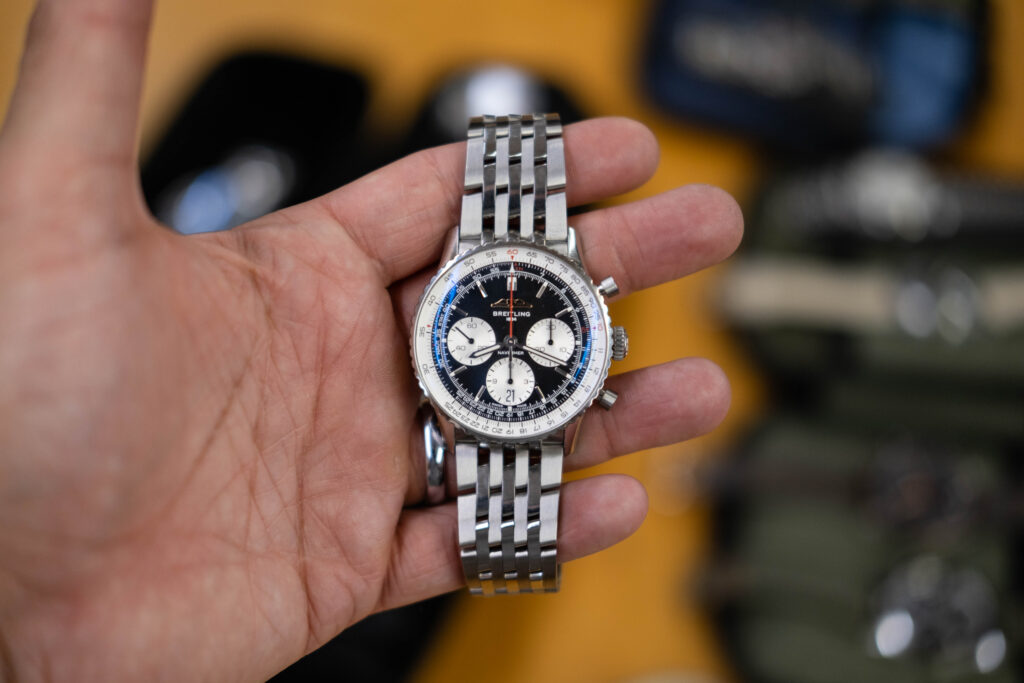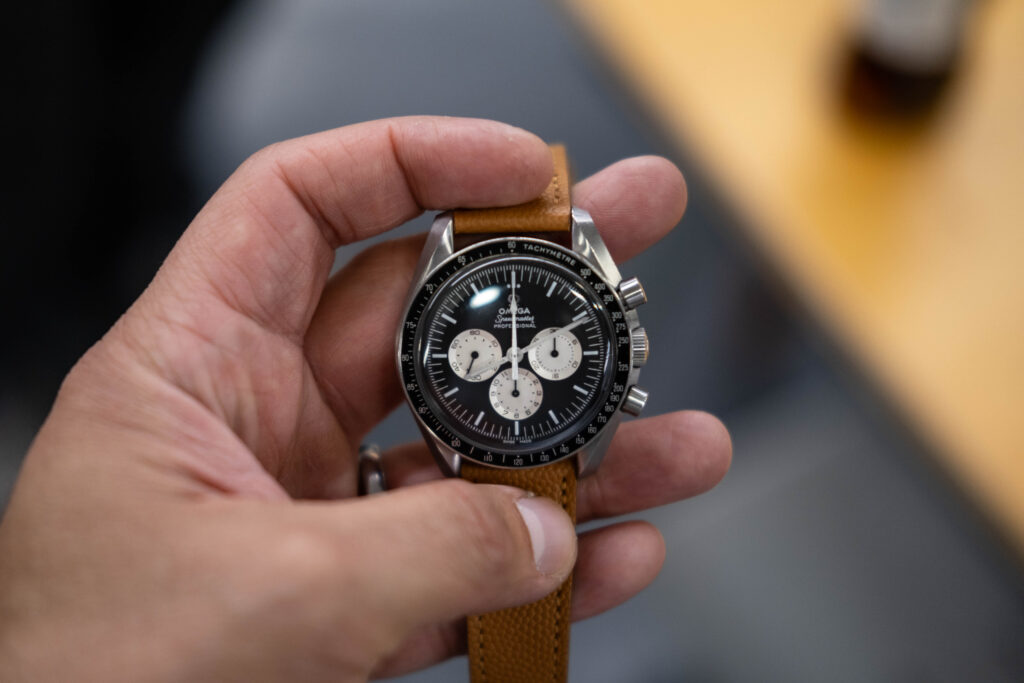We meet again! This time around, we will go deep into the world of Chronographs. Definitely my favorite watch complication. A complication so intricate that I would have not guessed how old it is. Our story can be traced back to Moinet in the 1800’s. Let me take you into this story in the next paragraphs.
The Beginning (Moinet)
Chronographs started in the 1800’s, with its creator being Louis Monet. But who was Moinet? Moinet was a watchmaker born in 1768. He completed the first Chronograph in 1816. Known as Compteur de Tierces (thirds timer) it was a tool for astronomical purposes. Created to measure the passage of stars, the moon and planets. It improve the measurement of time, going from 1/10th of a second to 1/60th of a second, thanks to its high frequency movement. 216,000 vibrations per hour (30 Hz).
Now you are asking what is a Hertz? Yes, it is a car rental company but that’s not what I am referring to here. A Hertz is the unit of measurement used to measure one cycle or oscillation per second. When it comes to watches, a Hertz is measuring the frequency of a watch’s balance wheel oscillations. Usually, the higher the frequency, the less susceptible to external disturbances, more precise and more stable. In Chronographs, this translates to a higher frequency the smaller the fraction of a second that can be measured.
Let’s get back to Moinet. He was able to adapt a transit instrument originally used for sea traveling. He invented the start, stop and reset functions. For the frequency that Moinet needed, there was nothing available at the time. He pushed boundaries by creating this Thirds Timer. It took a century for another watchmaker to match the precision of this first Chrono.

19th Century Further improvements
Our next step in the 19th century continues with Nicolas Matthieu Rieussec. This mister Rieussec, was also a huge influence on the Chrono watches. He came up with another invention, the “inking Chrono” or “Seconds Chrono” as he called it. This was the first Chrono to finally be able to record the elapsed time intervals . Using, from what I understand, what now are subdials. This new invention was specifically developed to time King Louis XVIII’s horse racing.
Rieussec presented his invention to the French Academy of Science in 1821. Fun fact, the same year Central America and Mexico were reaching their independence. Rieussec was granted the patent for his new invention in 1822. His version of the Chronograph was able to measure up to 1/5th of a second. Maybe the second most notable fact is that Reiussec was the first one to commercialize the Chronograph. Setting the stage for the now Chrono wrist watches.
In 1831 Joseph Thaddaus Whinnerl invented the double hand mechanism. That now is used on the better know rattrapante mechanism. In 1844, Adolphe Nicole also had his contribution in developing the rattrapante, refining the movement to what it is actually known today. This one took me some time to understand just by reading descriptions. I doubt I have seen one in the metal yet. If I have, I’ve been so ignorant that I have missed it. The name rattrapante can be translated to English as re-trap. This is because the watch has two Chrono hands. This helps time two different intervals. When stopping the first hand, the second hand catches up to the first one. And the rattrapante function helps both keep going together. Get it, re-catching it?
We move now to 1868 with Augustus Baud. Auggie’s contribution is one but very significant. He had the bright idea of moving the Chrono module to the back of the watch, improving serviceability. Last, we move to the 1870’s with Henry Alfred Lugrin. Henry developed the vertical clutch mechanism, making the watch more efficient and easier to install.

The 20th Century
The 20th century also saw its fair share of Chronograph developments. Maybe the biggest highlight being the first Automatic Chronograph in the 60’s. But let’s go step by step, mentioning significant Chronograph milestones throughout the century. In the 1910’s Longines introduced Caliber 13.33Z, one of the first to be used on a Chronograph worn on the wrist. I have not found anything conclusive to say that it is the definite first. Breitling and Universe Geneve also introduced wristwatches with Chronograph complications around that time.
In 1934 Willy Breitling introduced the first two-pusher Chronograph movement. This established the architecture of the movements still used to this time. Two years later, in 1936, Longines patented the first Fly-Back mechanism. In 1969, we get to the highlight of the century, as Zenith introduced the first automatic Chrono with the Caliber 11. This was a high frequency movement, capable of measuring 1/10th of a second. The same year, Seiko introduced their version of the automatic Chrono. Seiko’s had a vertical clutch and column wheel.
Moving to the last quarter of the century. In 1975 Seiko introduced the 0635, a highlight for the Digi lovers. By the end of the 1900’s. In 1993, AP released the Royal Oak Offshore, a very popular Chrono now. At the end of the 1990’s, early 2000’s, it became the norm for big brands to develop their own calibers.

Challenges
The Cronograph is a very complex watch to make. These calibers obviously require more pieces than a time-only watch. This is why adding the chronograph function to watches is a very difficult task. Specially without compromising accuracy and reliability. More parts also equals to higher manufacturing prices.
Expanding from the previous point, more parts can translate to thicker and bulkier pieces. There are multiple ways to approach this but the two I’d like to highlight here are the fully integrated or the modular ones. As you might be assuming, the fully integrated is better received among enthusiasts, can be more expensive but thinner. The modular, as the name states, is a module attached to a regular movement. It is mostly cheaper, easier to assemble and less glamorous among enthusiasts. It can also be a thicker piece.
If you take into account the fact that the automatic Chrono movement was not developed until the end of the 60’s. We can add it as a challenge. Throwing in the same bucket the different extra complications like the rattrapante here. Sometimes being a Chronograph is not enough. The Octo Finissimo is the latest addition to the modernization of the Chronograph.

Final Thoughts
Chronographs are not the tools they used to be. Taking it a bit further, it is debatable that a wrist watch is a tool anymore. At least not the primary but a backup. Chronographs are still a tale of innovation and engineering development. Wether you like these watches for their story or just because they look cool, Chronographs are a big part of the watch world. Definitely my favorite type of watch.
Thanks for stopping by,
DL
Discover more from 3DLANES
Subscribe to get the latest posts sent to your email.
